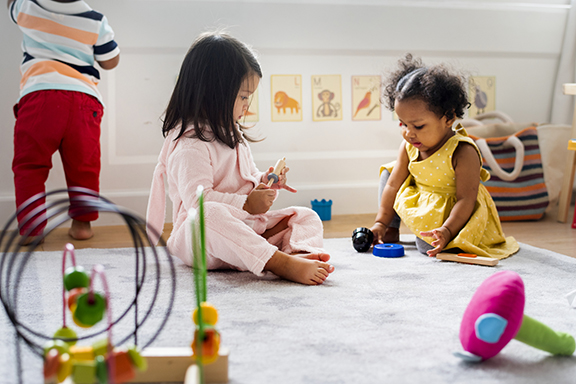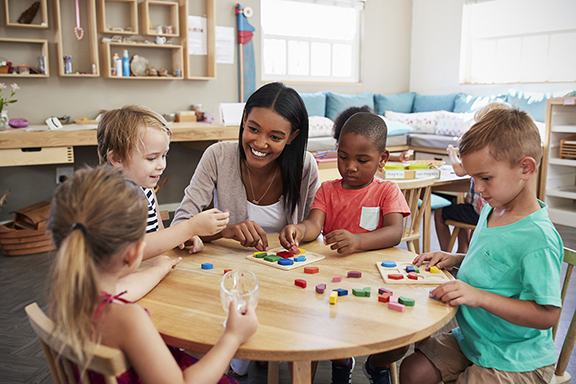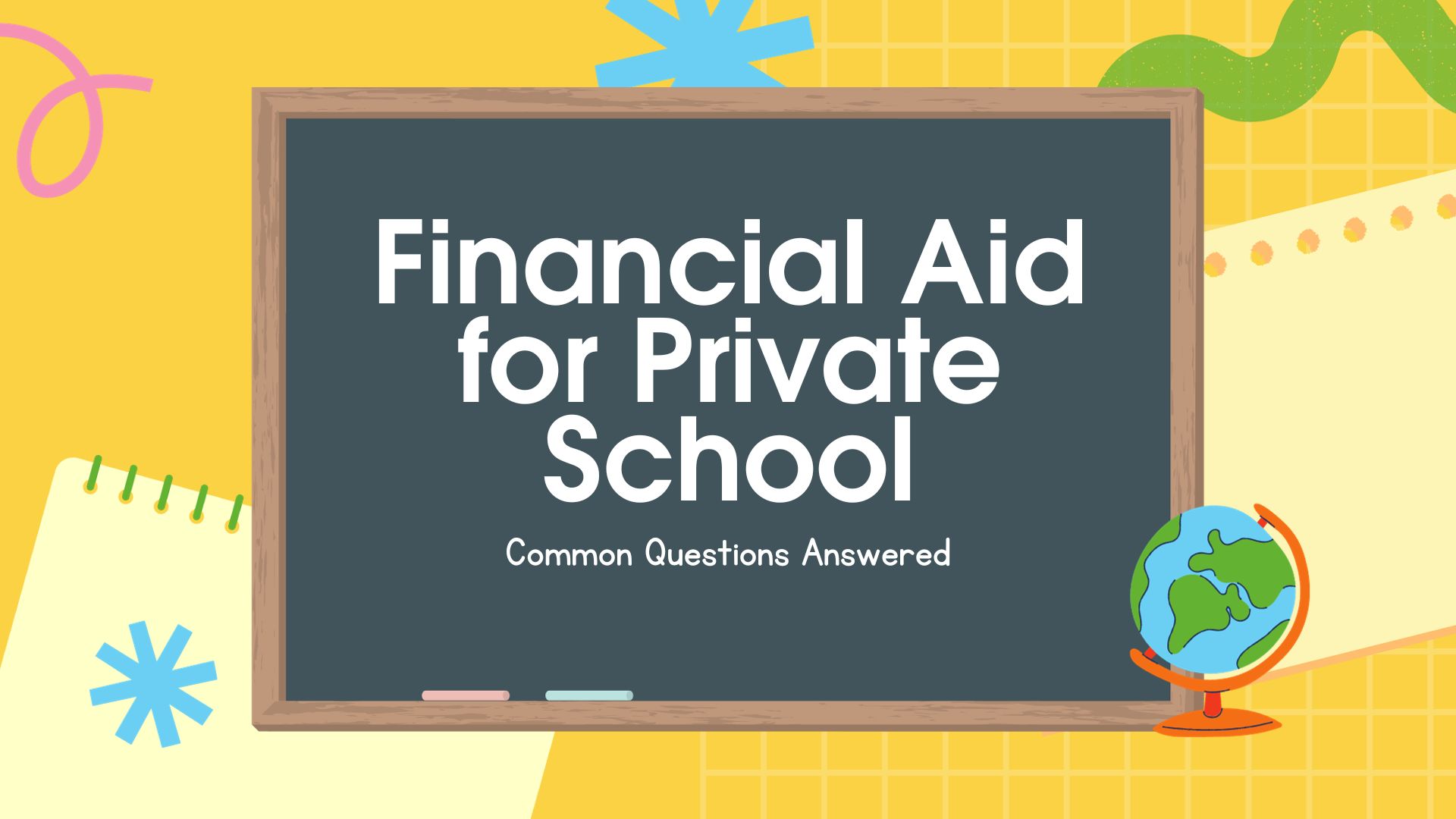Scaffold Parenting: Raising Resilient, Self-Reliant, and Secure Kids in an Age of Anxiety

When my son Joshua was 10 years old, he came to me and my wife and said he was going to do a performance with his friend Adam at a talent show at school. Josh was a quiet kid—definitely not a performer personality. I remember swallowing hard, trying to be encouraging.
“That’s great! What do you have in mind?” I asked.
“We’re going to do a dance inspired by Michael Jordan to ‘Jump’ by Kris Kross,” he said. He might as well have said, I’m going to perform open heart surgery onstage! It’s going to be awesome!
I was terrified on his behalf. I thought, He’s going to die up there. I’ve been a therapist for thirty-plus years, and so many patients of mine have told me about their childhood trauma of performance in public—and they were still processing the horror decades later.
I couldn’t help myself from saying, “Well, I’m not so sure that’s a good idea.” I knew why he was doing what he was doing; he was a Michael Jordan fanatic and since age two he’d been fascinated with break-dancers in the park. But I was afraid that he’d be embarrassed.
My wife, Linda, shot me a look and said to Josh, “That sounds great.”
Three days before the assembly, Josh informed Linda and me that his friend Adam had backed out. I was absolutely flooded with relief. “Oh, well. It just wasn’t meant to be,” I said. “No, I’m going to do it by myself,” was Josh’s reply. Linda said, “Good for you.”
I was a wreck the whole day of the show. I couldn’t be there, but Linda attended. She watched the assembly from the back of the auditorium and called me right after. “It was amazing,” she said. “The crowd went wild. He killed it up there.”
A real-life Napoleon Dynamite twist! I felt relief, joy, and then guilt. Why hadn’t I had faith that my son knew what he was doing? Linda had encouraged him, and she was right. He poured his soul into the performance and the crowd loved it. Twenty years later, his friends from elementary school can still remember how that brave moment drew them to him.
What if I had succeeded in dissuading Josh from even getting on stage? Left to my own devices, I would have denied him an opportunity that was important to his growth as a person. The performance positively affected his confidence and his social skills. He risked embarrassment and gained powerful mental and emotional muscle.
Too often, our well-meaning instincts as parents sabotage the development of key skills our kids need to thrive. This has been a lesson that I and the clinicians at the Child Mind Institute have learned again and again over the last 12 years. We saw a great need for parents to have a compassionate blueprint for helping kids grow into the strong, unique people they are meant to be, and the result is our philosophy of “scaffold parenting.”
You’ve heard about helicopter parenting and snowplow parenting and concierge parenting. The list goes on and on. Scaffold parenting is a healthy alternative born out of the experience of Child Mind Institute clinicians as mental health providers and as parents themselves.
Of course, it’s also born out of my experience. I’m a good example of how easy it is for parents to accidentally get in the way of their children’s growth. My parents were Polish Jewish immigrants who survived the Holocaust. Their mindset was, “Time is limited. You have to be successful now.” This upbringing affected how I raised my sons. I always worried about them failing and I tried to prevent that from happening by “swooping in.”
You can see where this is going. My instinct was to ensure success by preventing failure. But contrary to popular belief, good parenting is not about rescuing kids. Sometimes, like in the story about Joshua’s dance performance, my instinct would result in preventing success.
What’s the antidote? To raise resilient, independent, confident kids—especially in the ongoing aftermath of the extraordinary coronavirus crisis—we teach moms and dads about scaffold parenting. The metaphor is that the child is the “building,” and the parents are the scaffold around it providing support, structure, and encouragement as the child rises and grows.
Support, structure, and encouragement are the three pillars of scaffold parenting. At every stage, parents can model and teach positive behaviors, give corrective feedback, and boost self-esteem. This allows the child to develop the strength and agency they need to become happy, successful adults.
Here are the basics of each pillar:
Structure: Establish routines, house rules, ways of thinking, and a clear communication style. These are crucial to your child’s sense of security and stability.
Support: Provide empathy and validation. This will help kids learn how to process difficult feelings, which will help them bounce back from rejection and failures.
Encouragement: Push your child to try new things and take risks. If you don’t encourage your children to risk failure, you’re teaching them to be afraid and dependent.
In my book, The Scaffold Effect, I describe ten practical scaffolding strategies to help parents create the right balance of supportive structure and room to grow. The way my wife Linda approached Josh’s dance performance was a great example of how to build strength. It’s often a matter of letting your kids surprise you with how much they’ve already grown. I spoke with Joshua recently about this moment. I wanted to know how he remembered the experience. Was he nervous?
“I knew it was going to be great,” he said.
How did I miss that? The point of scaffold parenting is that when you’re not suffocatingly close or distantly unavailable, parents are at a perfect vantage point to watch their children grow.
This isn’t an easy task—that’s why we wrote the book! For parents, backing off and letting kids struggle is sometimes the hardest thing to do. We’re socialized for the fixer/protector role, to step in and take care of the problem. If your kid falls and scrapes their knee, your instinct is to put a Band-Aid on it, and say, “I’ll make it better.” Then they go back to playing and you feel good about having done your job well as a fixer.
However, you can’t put a Band-Aid on a social rejection or a failure experience. There is no instant fix for kids who are navigating social, academic, and emotional challenges. You can’t protect a child from the trials of life. But you can give kids armor by creating a loving scaffold to help them grow.
The world is tough out there. Even before the coronavirus pandemic, anxiety was on the rise. The number of ways kids could embarrass themselves was growing as the number of ways for them to distinguish themselves seemed to be shrinking.
But our children don’t learn to handle anxiety by avoiding it. This insight is the bedrock of the cognitive behavioral therapy that we practice at the Child Mind Institute and that has helped us change so many children’s lives. Therapists and parents are in the unique position to be able to support and guide young people as they grow.
It’s about not just surviving but thriving. A scaffold parent provides structure and encouragement even in difficult moments, and helps children build strength. I hope you’ll join the ranks!
Works Cited
Koplewicz, Harold S. The Scaffold Effect: Raising Resilient, Self-Reliant, and Secure Kids in an Age of Anxiety. Harmony Books, 2021.
Harold S. Koplewicz, MD, is a child and adolescent psychiatrist. He is the author of several books, including The Scaffold Effect: Raising Resilient, Self-Reliant, and Secure Kids in an Age of Anxiety. Dr. Koplewicz is also the founding president and Medical Director of the Child Mind Institute.
This article first appeared in the 2022 issue of the Parents League Review. Get the current issue of the Review free with a family membership. Or purchase it separately.











